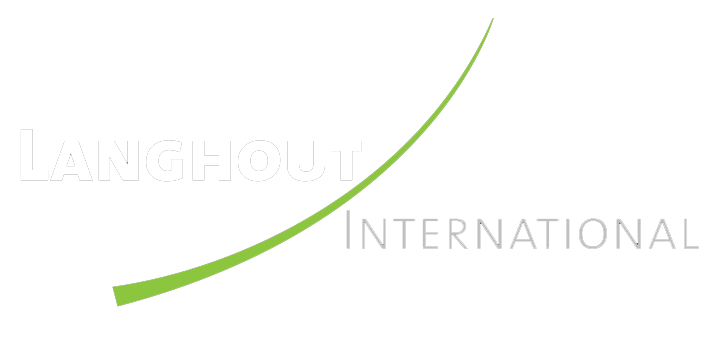How do we increase the rate of business acceleration? Does it happen randomly by chance? Is it situational and opportunistic? Or, does it happen by design?
Processes in your business are dynamic, not static. The key is to identify and understand those processes that will take you to a higher level, even catapulting you into hyper speed, to a 10X or greater rate of growth. Identifying, isolating, and focusing on the primary drivers and strategic differentiators comprise the key to designing an accelerated growth strategy enabling dramatic growth … Buckle up and read on …
Here is what I think…
Growing a business is complex and requires a great deal of planning. The growth process can be simplified by understanding the core drivers, the main components creating growth. What are the things we do that are sequential, that build and repeat, and when deployed drive momentum, accelerating us through higher levels and achieving milestones we have never before reached in any prior period?
Once the primary growth components are identified, processes can be designed, and each component assembled sequentially and mapped. The growth process then can be activated into a repeatable sequence, nurtured, and improved. Each turn through the process drives increasingly greater acceleration, with an exponential outcome.
Want more detail? Check out the resources below:
ARTICLE: Turning the Flywheel, A Monograph. Jim Collins [2-hour read] Monograph Video. [2:40 watch]
As a young teen interested in cars, I took apart a ’56 Chevy where I learned about the genius of the Flywheel. In my 56 Chevy the Flywheel worked by collecting energy and then releasing it quickly, at rates that exceeded the input rate of the engine, allowing the vehicle to accelerate.
In his 2001 classic ‘Good to Great’, Jim Collins first described the Flywheel as a business concepts befitting a ‘Great’ company. In this ‘Flywheel Monograph’, Collins updates and makes personal the concept, where he states that “once we grasp how to create Flywheel momentum in our particular circumstance, and apply that understanding with creativity and discipline, we get the power of strategic compounding.” Collins ‘Flywheel Monograph’ provides us with a roadmap and template to help us develop our own flywheel for accelerated growth.
His many examples are clear and illustrative, including Amazon, Vanguard, Intel, and Cleveland Clinic, among others. His 7-point Flywheel Capture Roadmap is provided to help capture our unique Flywheel, accelerating our growth and creating a high level of enterprise value. Note that each component of the flywheel sets up for the next component, moving farther and faster in each revolution.
VIDEO: Cash Conversion Cycle. Shannon Susko [3:29 min.]
Cash is the fuel for growth, and growth drains cash. We need to look at ways to accelerate cash returning back through the business cycle.
In her ‘Cash Acceleration Strategy’ video, Susko describes a Cash Conversion Cycle (CCC) exercise. The CCC quantifies how long it takes for a dollar to be returned from the business process, from the time of the first sales inquiry to when the money is collected and deposited in the bank.
Note, in some companies, such as Amazon, Dell, and Delta Airlines, the CCC is negative. Such companies require a payment to initiate a transaction. We pay for airline tickets prior to flying. We pay for purchases on Amazon prior to receiving the products. When Amazon receives cash prior to shipping product, they have a negative CCC. This negative CCC allows Amazon to initiate and deploy rapid expansion strategies, such as Amazon’s acquisition of Whole Foods, or their successful launch of Amazon Web Services (AWS).
Susko breaks down the CCC into four basic cycles:
1 Sales, 2 Make/Production/Inventory, 3 Delivery, 4, Billing and Payment.
In 'The Metronome Effect', Susko dissects the first component of the CCC, the sales cycle.
Analyzing each of the four components can help determine ways to significantly reduce the number of days in the cycle, accelerating the return of cash to be utilized for additional growth. Do you know your how many days are in your Cash Conversion Cycle?
BOOK: Exponential Organizations. Salim Ismael
Salim Ismail is a Canadian serial entrepreneur, angel investor, author, speaker, and technology strategist. He is the Founding Executive Director of Singularity University and lead author of Exponential Organizations. (ExOs)
We recognize that to achieve exponential growth, you must first think BIG. Aspirational examples of BIG thinking from some of the fastest growing ExOs include Google - “Organize the World’s Information”; TED - “Ideas Worth Spreading”; Singularity University - “Positively Impact One Billion People”. These are Massive Transformational Purposes (MTPs), and all ExOs have them.
After an extensive study of some of the fastest growing companies in the world today, Ismael discovered not only the MTP, but ten other attributes that reflect the internal mechanisms (IDEAS acronym) and externalities (SCALE acronym) each company is leveraging to achieve exponential growth.
In his example, Ismael creatively describes the dichotomy of how the ten attributes collectively referenced as IDEAS, and SCALE. IDEAS (thoughts of growth, creativity and uncertainty) are contrasted with SCALE (concepts of order, control, and stability).
In Ismael’s model, both IDEAS and SCALE interact in an exponential fashion, leveraging strengths, and building confidence. Not all companies have all ten attributes, but each have at least four which when combined with the MTP, allow it to rapidly scale away from competition.
A self-inquiry question to consider:
Do you have a Massive Transformational Purpose that inspires you to greatness?
And finally, I'll leave you with a quote:
"If your Purpose Statement doesn’t give you ‘goosebumps’, you are still developing it.”
—Mark Green



